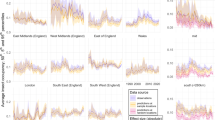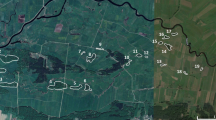Abstract
IN connection with the controversy on the above subject, I am permitted to add the testimony of an old friend of mine, Mr. H. S. Wise, of Ford, Drewsteignton, South Devon, an extremely keen and accurate observer, with wide experience both of British and Indian fauna. In letters to me dated February 9 and 12, 1902, he says:—“I have seen birds attack butterflies both in England and in India,” and gives the following notes:— “On summer evenings, magpies hunt a grass field and catch immense numbers of moths, beetles and, I believe, butterflies Last summer I shot a magpie, one of a family that was carefully working a large grass field; his beak was full of recently-caught Swift Moths (Hepialus lupulinus).” Later he says, “I have seen the common spotted flycatcher pursue a butterfly and miss it, giving up the pursuit; this was of course on the wing.” Further, “titmice eat quantities of small moths, which they catch when at rest.” Speaking of the large Yellow Underwing (Tryphoena pronuba), Mr. Wise tells me, “several small birds eat this moth, sparrows among the number; it is a strong moth, and the bird generally beats it on the ground to kill it before eating it. This insect is fond of lying on the ground among leaves, &c, and birds will hunt it out and catch it.” Among other enemies of British Lepidoptera, Mr. Wise notes that “bats feed largely on the night-flying moths; Tryphoena ianthina is one I have seen them catch.” My friend also refers to a note by G. C. Dudgeon, in the Journal of the Bombay Natural History Society for March 20, 1895, on the King Crow (Dicrurus longicaudatus) catching a butterfly (Teinopalpus imperialis, ), and adds, “In the case of a jungle-fire in an Indian forest, birds at once come and catch the numerous insects which fly up for safety, the above-mentioned King Crow being always to the fore.” In India also lizards are formidable enemies to Lepidoptera. Mr. Wise says, “in Bombay there is hardly a lamppost which has not got a gecko on it; these feed on the moths which are attracted to the light.”
This is a preview of subscription content, access via your institution
Access options
Subscribe to this journal
Receive 51 print issues and online access
$199.00 per year
only $3.90 per issue
Buy this article
- Purchase on SpringerLink
- Instant access to full article PDF
Prices may be subject to local taxes which are calculated during checkout
Similar content being viewed by others
Author information
Authors and Affiliations
Rights and permissions
About this article
Cite this article
VELEY, L. Birds attacking Butterflies and Moths. Nature 65, 392 (1902). https://doi.org/10.1038/065392a0
Issue date:
DOI: https://doi.org/10.1038/065392a0



